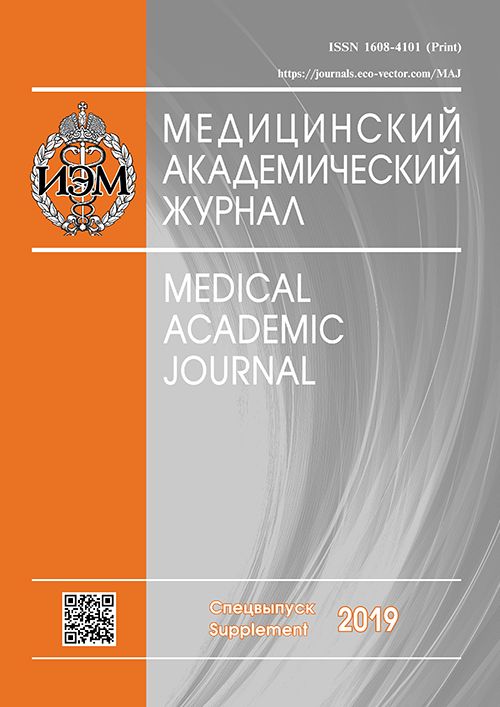CLINICAL AND IMMUNOLOGICAL ASPECTS OF CHRONIC HEADACHES IN PATIENTS WITH SYSTEMIC LUPUS ERYTHEMATOSUS
- Authors: Aleksandrova NV1, Aleksandrov AV1,2, Alekhina IY.3, Paramonova OV2
-
Affiliations:
- Institute for Clinical and Experimental Rheumatology named after A.B. Zborovsky, Volgograd
- Volgograd State Medical University, Volgograd
- Stavropol State Medical University, Stavropol
- Issue: Vol 19, No 1S (2019)
- Pages: 54-56
- Section: Articles
- Published: 15.12.2019
- URL: https://journals.eco-vector.com/MAJ/article/view/19322
- ID: 19322
Cite item
Abstract
Objective: to study the clinical and immunologica features of the manifestation of chronic pain in systemic lupus erythematosus (SLE) patients with neurological symptoms.Methods. We examined 30 healthy individuals and 38 patients with SLE. Beck’s depression questionnaire was used to assess the presence of depressive symptoms. Antibodies to adenosine deaminase (anti-ADA), β2-glycoprotein-I-dependent antibodies to phospholipids of the IgG class (anti-FL) and antibodies to double-stranded DNA (anti-dsDNA) were determined in the serum of patients with SLE. Doppler sonography of the brachiocephalic arteries was performed for all patients with SLE.Results. Complaints about the presence of headaches of varying severity presented 35 people (92.1%). Migraine was recorded in 63.2% patients with SLE. Doppler ultrasound in patients with SLE with chronic headaches in 66.7% of cases showed signs of reduced blood flow in the arteries of the vertebrobasilar basin, which may indicate chronic brain ischemia. Signs of depressive disorder of varying severity were found in 36.8% of patients with SLE, and in patients with neurological disorders, moderate (p = 0.027) and severe (p = 0.041) depression were more often detected. Elevated levels of anti-ADA were found in 36.8%, and anti-FL in 44.7% of patients with SLE. It was noted that “migraine-like” manifestations of chronic pain syndrome were more common in the group of patients with SLE, who had a combined increase in anti-ADA and anti-FL (χ2 = 4.5; p = 0.024). Since a certain part of ADA is concentrated in the plasma membranes of vascular and platelet endothelium cells, it can be assumed that there is a conformational effect of anti-ADA on the β2-glycoprotein-I, leading to increased synthesis of anti-FL and undesirable activation of coagulation cascade in vessels.Conclusion. The combination of severe chronic headache with high levels of anti-ADA and anti-FL can precede the development of stroke and transient ischemic attacks, which emphasizes the need for additional immunological examination of patients with SLE with neurological symptoms.
Keywords
Full Text
About the authors
N V Aleksandrova
Institute for Clinical and Experimental Rheumatology named after A.B. Zborovsky, Volgograd
A V Aleksandrov
Institute for Clinical and Experimental Rheumatology named after A.B. Zborovsky, Volgograd; Volgograd State Medical University, Volgograd
I Yu Alekhina
Stavropol State Medical University, Stavropol
O V Paramonova
Volgograd State Medical University, Volgograd
References
- Aleksandrov AV, Alekhina IY, Aleksandrov VA, et al. Antibodies to the enzyme of adenine branch of purine metabolism in patients with systemic lupus erythematosus. Annals of the Rheumatic Diseases. 2016;75(S2):1054.
- Fajzulina DL, Shprah VV. Sosudistaja patologija golovnogo mozga u bol’nyh sistemnoj krasnoj volchankoj zhenshhin. Zhurnal nevrologii i psihiatrii im. S.S. Korsakova. 2013;113(3):4-8.
Supplementary files







